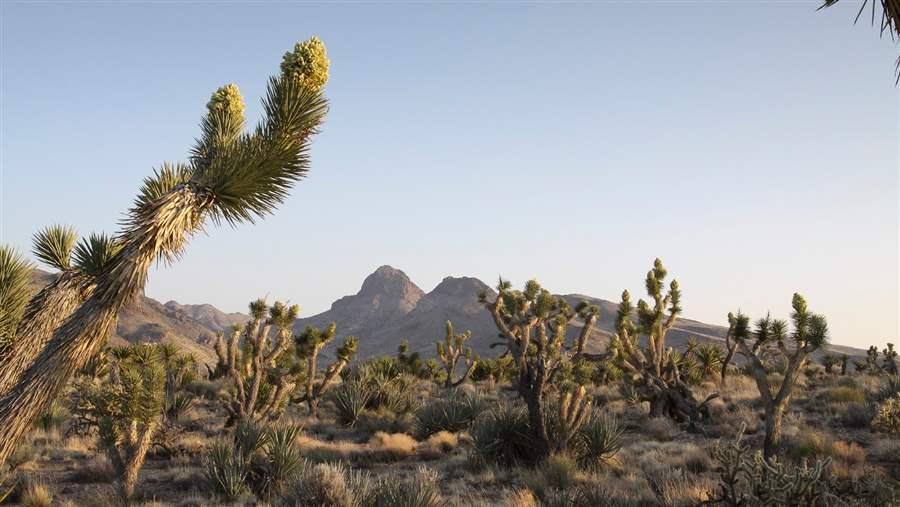Pew Applauds Designation of National Monuments in California Desert
'Momentous action' protects the Mojave Trails, Sand to Snow, and Castle Mountains regions
 David Lamfrom, NPCA
David Lamfrom, NPCACastle Mountains
The Castle Mountains feature expansive forests of Joshua trees, pinyon pine, and juniper.
Note: On Feb. 12, 2016, President Barack Obama designated three new national monuments in the California desert, encompassing nearly 1.8 million acres.
WASHINGTON—The Pew Charitable Trusts today praised the Obama administration’s designation of three new national monuments in the California desert: Mojave Trails, along historic Route 66 between Needles and Barstow; Sand to Snow, northwest of Palm Springs; and Castle Mountains, on the Nevada border south of Las Vegas. Mojave Trails is the largest land monument designated by President Barack Obama.
Mike Matz, director of Pew’s U.S. public lands program, released the following statement:
“President Obama’s designation of the most expansive national monuments of his administration is a momentous action with positive implications for local economies, threatened historic and cultural areas, and migrating wildlife. We applaud the president’s thoughtful use of authority granted to him by Congress under the Antiquities Act to safeguard Mojave Trails, Sand to Snow, and Castle Mountains.
“These monuments came about because President Obama and Senator Dianne Feinstein were willing to listen to local voices and lead the way in finding solutions to local concerns. Community leaders, business executives, wildlife biologists, historians, archeologists, individuals who enjoy outdoor recreation, and other stakeholders have been discussing the need to protect these areas for more than a decade. Senator Feinstein was the lead author of legislation to protect these areas, which built upon her previous desert conservation work; when the legislation stalled in Congress, she took her case to the administration.
“Interior Secretary Sally Jewell and Agriculture Secretary Tom Vilsack joined Senator Feinstein in extensive consultations with interested parties in the region. President Obama built on these efforts to ensure that these American landscapes will be conserved for the benefit of generations to come.
“Protecting Mojave Trails, Sand to Snow, and Castle Mountains will preserve a region rich in historic, cultural, and natural resources, and will also benefit local communities. Numerous studies across the West have found that protected areas tend to benefit the local economy by bringing in new jobs and corresponding income related to tourism, recreation, and services.
“The designation of these outstanding natural areas as national monuments will ensure continued recreational opportunities, support local economies, and safeguard the region's beauty, wildlife, rare plants, and waters. This is a welcome start to the new year.”
The Pew Charitable Trusts is driven by the power of knowledge to solve today’s most challenging problems. Learn more at www.pewtrusts.org.











